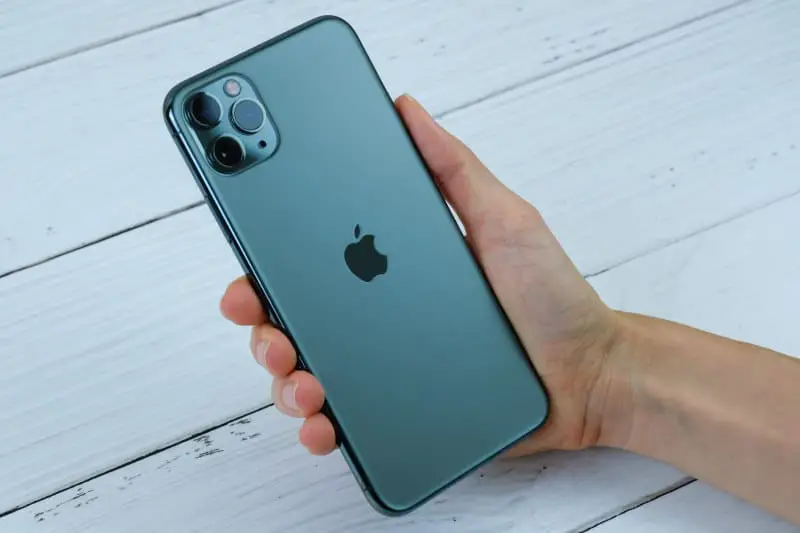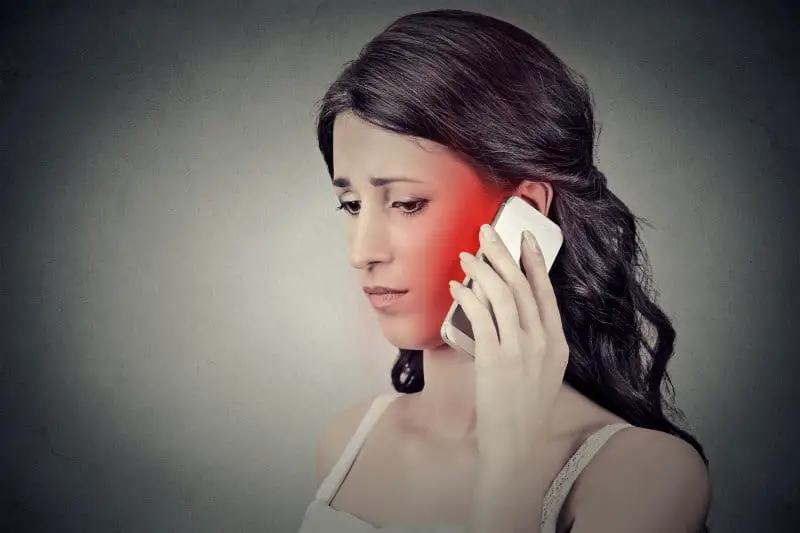Anti-radiation stickers have become very popular in recent years because they are easy to use, cheap, and efficient in shielding you against Radio Frequency (RF) radiation from your cell phone device.
These stickers are embedded with different technologies that protect you from EMF radiation.
But are these products legit? Let’s find out and learn where to place the anti-radiation stickers to protect yourself from harmful effects.
What Are Anti-radiation Stickers?
Anti-radiation stickers are an adhesive patch that claims to shield you from the damaging effects of electromagnetic radiation.
These stickers can be placed on your cell phone, tablet, laptop, and other devices that emit EMF radiation. But they’re most used to shield you from cell phone radiation.
Compared to other radiation protection products, stickers are difficult to test. It is easy to understand how other EMF protection products work. But it becomes difficult to measure the efficiency of the stickers or prove the claims.
You can’t use EMF meters to test radiation absorption rate from stickers. Unlike the other protection products, they create a barrier between the radiation source and your body. This makes it easy to measure EMF exposure levels to your body.
With stickers, we only rely on manufacturers’ claims that the product works. They claim that the product shields you from the harmful effects of radiation.
The Federal Trade Commission (FTC) maintains that there is no scientific evidence or research-related report showing how the devices work. Due to the increased dangers of EMF and more people looking for ways to protect themselves, some companies entered the market to fill that gap.
However, these companies have unproven and untested products. They do not have research data or science that show how the products work, making it hard to prove the claims.
So, there is no guarantee the stickers will work as they claim, they might even do the opposite of what they claim to do.
To be safe, you can consider other effective EMF protection alternatives instead of stickers. For protection against RF radiation, you can consider using a phone case or pouch.
Do Anti-radiation Stickers Work?
Since it is difficult to test the efficiency of anti-radiation stickers, it is assumed that they can only work a tiny bit. They can only protect the tiny area where the sticker is placed.
If you have a 1-inch sticker, it will only shield radiation from the small area covered by the sticker at the back of your phone. Therefore, the size of your sticker determines the portion of your device that is shielded from electromagnetic radiation.

If you compare how electromagnetic radiation waves are emitted and how your body absorbs radiation from a cell phone, then you will realize, the stickers are not the best EMF protection product.
Additionally, the stickers only cover a small area from the back of the cell phone. Your cell phone still exposes you to RF radiation from all sides and at different angles. So instead of shielding you, they can increase the amount of radiation exposure.
For example, having a small sticker placed near the antenna of your cell phone will not lower your absorption rate. This is because your entire cell phone emits levels of electromagnetic waves.
In addition, the stickers can interfere with the phone signals forcing the phone to draw more power in order to connect to the network and communicate. As the phone tries to communicate with the cell towers, it emits more EMF radiation.
So if you really want to be safe, you can use hands-free headsets to enable you to put the radiation-emitting cell phone away from your brain’s cells. You should also use your phone when in open places instead of an enclosed room.
You should avoid making long calls in areas with poor signal reception. If your phone struggles to maintain a signal, it ends up emitting more radiation.
How Anti-Radiation Stickers Work
There are different types of stickers on the market, and some are more expensive than others. Some stickers claim to have anti-radiation effectiveness of 99% while others claim to emit safe radiation that cancels the harmful radiation.
The stickers have metals that deflect or absorb RF waves. For example, Q-link clear stickers use SRT technology to not only shield you from EMF radiation but also to help in strengthening your body.
Stickers act as a neutralizer that neutralizes radiation emitted by your cell phone. They only alter signals on the covered area to be less harmful rather than block them. When using the stickers, the phone will not get hot after a prolonged use
Each cell phone requires at least two stickers that last for 2 years to effectively shield you from cell phone radiation.
You can use the stickers on your laptop, tablet, monitor, Bluetooth earpiece, etc. You only need to attach the stickers to your device. Other anti-radiation stickers like Aire’s shield pro, Aulterra neutralizer, Earthcalm quantum cell stickers, and Quanthor tesla technology stickers have published scientific research information that proves the stickers work.
Aulterra neutralizer stickers use three layers of micro-thin paramagnetic minerals to neutralize radiation emitted in the environment. The neutralizing technology is capable of harmonizing the negative electromagnetic pulses emitted by cell phones and converting them to natural and coherent frequencies.
In this case, the stickers change the radiation frequency emitted by the phone into a more natural and safe frequency. It doesn’t reduce, block, or remove the electromagnetic radiation.
Therefore, when buying stickers, you should do more research on the specific brand to determine whether there is scientific evidence showing they work. Otherwise, most of the stickers are made from a material that is ineffective in absorbing or dispersing electromagnetic radiation.
4 Top Spots to Place the Stickers

You can place the attachable stickers on different areas of your phone to absorb radiation. Although, where you place the sticker depends on the type of EMF sticker you have and the phone brand.
Some of the common places you can place the stickers include:
1. The back of the phone
You can place at least two or more stickers on the back of your phone. If you only have one sticker, place it in the middle of the phone. However, your entire phone emits EMF radiation both at the back, front, and even on the sides. Stickers at the back will not effectively absorb all the radiation emitted.
For total protection, you should at least cover the entire side of the phone. Especially the side that is close to your body.
If you can have more stickers at the back, they will reduce the surface area of the phone that emits electromagnetic radiation. It also ensures your body doesn’t absorb radiation from the entire side of the phone into your hand.
2. Over the earpiece
Phones do emit radiation via the earpiece. Since you hold the earpiece close to your brain, it exposes your brain to high levels of radiation. If you talk for long hours over the phone you may experience radiation effects especially if you’re electromagnetically hypersensitive (EHS). To reduce your exposure levels you can place a sticker around your earpiece.
This will reduce the radiation coming from the earpiece only. You will still be exposed to radiation from the other parts of the cell phone.
3. Phone antenna
Another radiation hotspot is the phone antenna. Your cell phone antenna enables the phone to connect to the cell tower in order to communicate. You can place a sticker close to the antenna to reduce radiation.
However, placing the sticker around the antenna can end up increasing radiation emission instead of reducing it. Your phone can drop signals and this forces the phone to ramp up power in an effort to find a transmission signal.
For this reason, the stickers are said to contribute to increased radiation output from the phone. When the phone has weak signal strength, it increases its signal searching in an attempt to connect. As a result, more radiation is dispersed over the entire phone and a sticker will not be able to compensate for all radiation emitted.
4. Phone case
Another area you can place your sticker is in your Phone case. If you already have a phone case or cover, you can place the sticker on the case. If you place the stickers on the side where the phone gets into contact with your body, you can reduce a significant amount of radiation.
How To Remove The Stickers
Stickers are effective for at least two years. Therefore, you should remove them and dispose of them after that. Removing the stickers doesn’t have to be very difficult for you.
If it doesn’t come off that easily, you can rub a small amount of alcohol on the sticker. This weakens the adhesive on the sticker. Then use a credit card to help you remove it. Work the edge of the card back and forth over the surface until the sticker comes off.
Conclusion
There is no scientific evidence that shows the stickers work. If they did, phone manufacturers would incorporate the stickers with the phone itself or with phone cases. The entire cell phone emits electromagnetic radiation while the stickers only cover a small portion of the cell phone.
Secondly, some of the material used in stickers doesn’t absorb radiation apart from a small amount of heat. So they’re not effective in absorbing radiation emitted by your cell phone.
Alternatively, instead of using the anti-radiation stickers, you can use EMF protection phone cases which are more effective.


